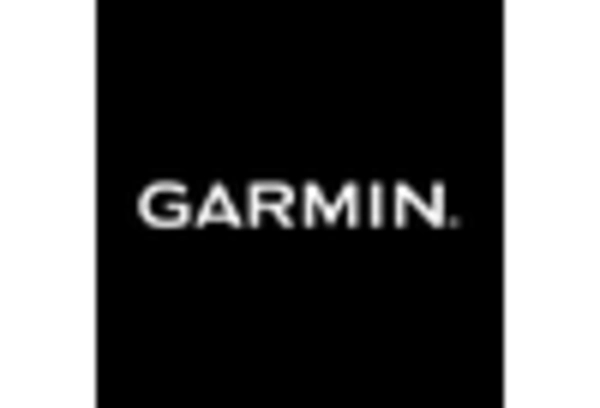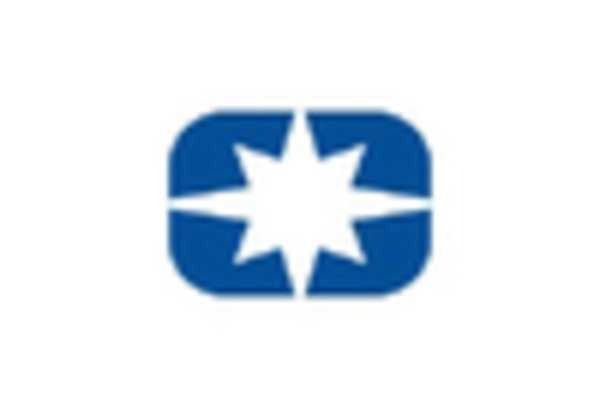Rising Health Consciousness
The increasing awareness of health and fitness among individuals appears to be a primary driver for the Sports Tracking Market. As more people prioritize their well-being, the demand for tools that monitor physical activity, heart rate, and overall fitness levels has surged. This trend is reflected in the growing sales of fitness trackers and smartwatches, which are projected to reach a market value of approximately 62 billion dollars by 2025. Consumers are increasingly seeking solutions that provide real-time feedback on their health metrics, thereby enhancing their exercise routines and lifestyle choices. Consequently, the Sports Tracking Market is likely to experience robust growth as more individuals adopt these technologies to achieve their fitness goals.
Focus on Performance Optimization
The emphasis on performance optimization among athletes is a significant driver for the Sports Tracking Market. Athletes at all levels are increasingly utilizing tracking technologies to analyze their performance metrics and identify areas for improvement. This focus on data-driven training is leading to a greater demand for sophisticated tracking devices that provide detailed insights into various aspects of athletic performance. The market for performance optimization tools is expected to grow, with projections indicating a potential increase to over 10 billion dollars by 2027. As athletes seek to gain a competitive edge, the Sports Tracking Market is likely to benefit from the growing interest in performance-enhancing technologies.
Growing Popularity of Team Sports
The rising popularity of team sports is contributing to the expansion of the Sports Tracking Market. As more individuals engage in organized sports, the demand for tracking solutions that monitor team performance and individual contributions is increasing. Coaches and athletes are increasingly utilizing data analytics to enhance training regimens and improve game strategies. This trend is evident in the increasing investment in sports analytics tools, which are projected to reach a market value of approximately 4 billion dollars by 2025. Consequently, the Sports Tracking Market is likely to see a surge in demand for products that cater to the needs of teams and coaches, thereby fostering a more competitive environment.
Technological Advancements in Wearables
Technological innovations in wearable devices are significantly influencing the Sports Tracking Market. The advent of advanced sensors, improved battery life, and enhanced connectivity options has led to the development of more sophisticated tracking devices. For instance, the integration of GPS and heart rate monitoring in wearables allows users to gain deeper insights into their performance. The market for these devices is expected to expand, with estimates suggesting a compound annual growth rate of around 15% over the next few years. As technology continues to evolve, the Sports Tracking Market is poised to benefit from the introduction of new features that cater to the diverse needs of athletes and fitness enthusiasts alike.
Increased Adoption of Mobile Applications
The proliferation of mobile applications designed for fitness tracking is driving growth in the Sports Tracking Market. These applications often complement wearable devices, providing users with a comprehensive platform to monitor their activities, set goals, and track progress. With millions of downloads across various platforms, fitness apps are becoming essential tools for individuals seeking to enhance their physical performance. The market for fitness applications is projected to grow significantly, with estimates indicating a potential increase to over 14 billion dollars by 2026. This trend suggests that the Sports Tracking Market will continue to thrive as more users leverage technology to achieve their fitness aspirations.
















Leave a Comment